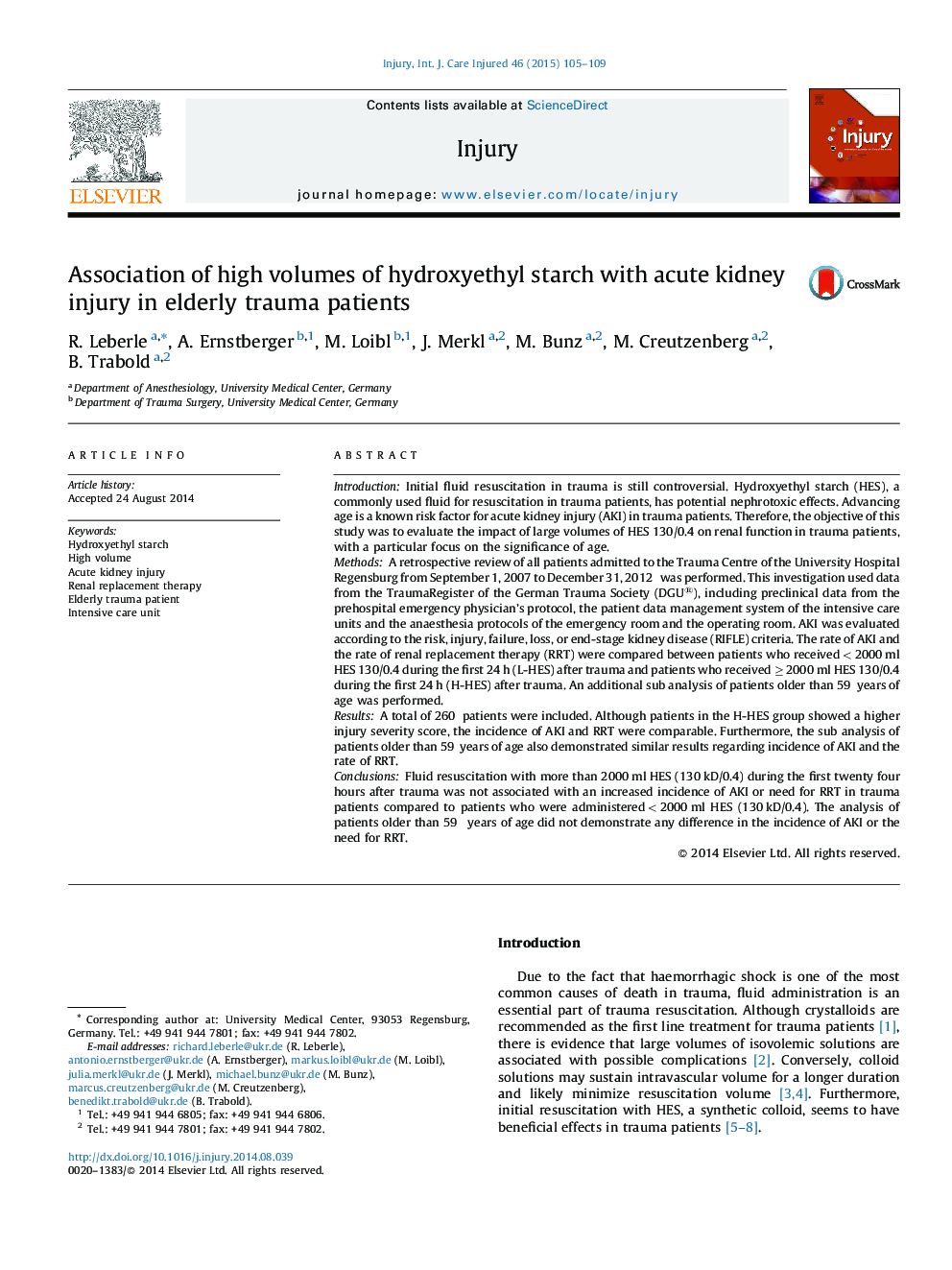| کد مقاله | کد نشریه | سال انتشار | مقاله انگلیسی | نسخه تمام متن |
|---|---|---|---|---|
| 3239179 | 1205986 | 2015 | 5 صفحه PDF | دانلود رایگان |
IntroductionInitial fluid resuscitation in trauma is still controversial. Hydroxyethyl starch (HES), a commonly used fluid for resuscitation in trauma patients, has potential nephrotoxic effects. Advancing age is a known risk factor for acute kidney injury (AKI) in trauma patients. Therefore, the objective of this study was to evaluate the impact of large volumes of HES 130/0.4 on renal function in trauma patients, with a particular focus on the significance of age.MethodsA retrospective review of all patients admitted to the Trauma Centre of the University Hospital Regensburg from September 1, 2007 to December 31, 2012 was performed. This investigation used data from the TraumaRegister of the German Trauma Society (DGU®), including preclinical data from the prehospital emergency physician's protocol, the patient data management system of the intensive care units and the anaesthesia protocols of the emergency room and the operating room. AKI was evaluated according to the risk, injury, failure, loss, or end-stage kidney disease (RIFLE) criteria. The rate of AKI and the rate of renal replacement therapy (RRT) were compared between patients who received < 2000 ml HES 130/0.4 during the first 24 h (L-HES) after trauma and patients who received ≥ 2000 ml HES 130/0.4 during the first 24 h (H-HES) after trauma. An additional sub analysis of patients older than 59 years of age was performed.ResultsA total of 260 patients were included. Although patients in the H-HES group showed a higher injury severity score, the incidence of AKI and RRT were comparable. Furthermore, the sub analysis of patients older than 59 years of age also demonstrated similar results regarding incidence of AKI and the rate of RRT.ConclusionsFluid resuscitation with more than 2000 ml HES (130 kD/0.4) during the first twenty four hours after trauma was not associated with an increased incidence of AKI or need for RRT in trauma patients compared to patients who were administered < 2000 ml HES (130 kD/0.4). The analysis of patients older than 59 years of age did not demonstrate any difference in the incidence of AKI or the need for RRT.
Journal: Injury - Volume 46, Issue 1, January 2015, Pages 105–109
